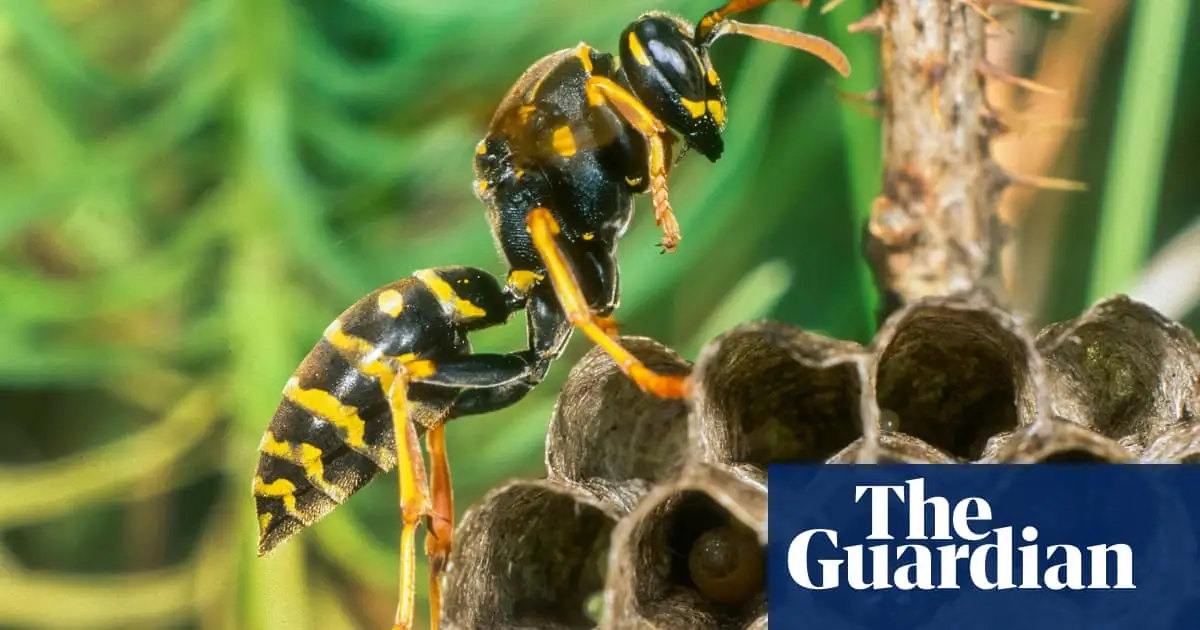Despite embracing an unruly approach to gardening, I am compelled to battle our hedge when the path becomes impassable. While cutting back some beech recently, my partner yelled out that he’d been stung. Moments later, we spotted a football-sized wasps’ nest hanging from a branch of our dogwood. Within minutes, I was nursing a sting of my own and hatching a relocation plan.
Being a former beekeeper, I’m fairly confident around stinging insects. So come nightfall I put on my old beekeeping suit and carefully placed a compost bag around the nest before cutting off the branch it hung from and placing the whole thing in a secure box. We nervously walked the package into the woods, opened the box and bag, then ran home. The internet assures me that the wasps will be temporarily baffled but eventually set about making a new home – far from my garden, hopefully.
Now, I’m not recommending this approach to ill-equipped gardeners. But the experience made me realise that the prejudice I’ve long held against wasps (developed while keeping bees – they are known to attack hives to eat the honey and the honeybees) was starting to come undone.



I’m a big fan of trichogramma wasps, myself.
I had a pantry moth infestation as a result of having birds (inherited from my mother - I’d never keep birds of my own choice, and I rehomed them after a few years)
Anyway, because I had birds and cats, bug bombs were out of the question, but I found trichogramma wasps. They are stingless wasps about the size of a grain of sand, 1-2 mm tops, so you can barely see them, and they lay their egg inside moth eggs (and some 100 other species of mostly pest insects, but they prefer what they hatch from which is typically moth eggs) their daughter eats the moth larva, hatches, and can immediately lay fertile eggs in more moth eggs. No males in the species due to a gut bacteria, so all wasps hatch fertile.
If anyone reading this needs this info, you can buy trichogramma wasps online, they aren’t expensive, you’ll want ~5k eggs for up to 2k sqft indoors (most sites I’ve seen this is the minimum order anyway, and back when I did it 8 years ago or so, cost me about $12/order, including shipping). They will escape through the window screens, and just die off if there aren’t enough target species’ eggs around, which is fine and not a problem. They can wipe out up to 95% of a targeted species when outdoors, but moths have a long life cycle so you need time to work through all the waves in your enclosed space. Just open the little cup inside, set it down somewhere near the kitchen or where you have the most moths, and that’s it. Repeat every 2-3 weeks until you don’t see moths anymore, which takes about 4-6 months. After that, for two more years, any time you see a moth inside, order another round and release them. This is a precautionary measure in case you still have a residual population hiding somewhere.